Ultrasonic bath
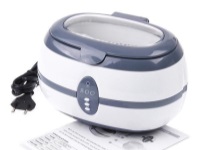
Lately, opticians and jewelers willingly offer the service of cleaning with ultrasound. They use a special machine called an ultrasound bath (USE bath), which has a special reservoir for the objects to be treated. The useful properties of ultrasound are manifested by a special liquid. The master needs to put the object, turn on the device, then wash it. Minimum of action!
Theoretically, such a bath can be made any container, using special equipment for the creation and propagation of ultrasound.
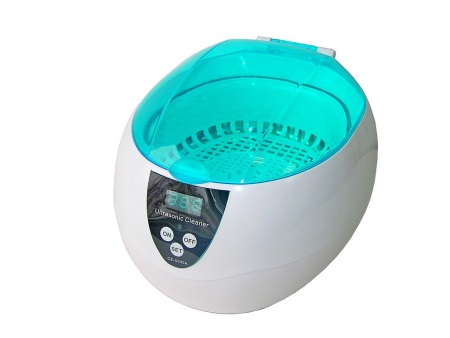
Applications
Cleaning objects is the simplest and most trivial application of the ultrasonic bath in most industries. The device is in great demand in medicine, research - using ultrasound to accelerate reactions, conduct tests with substances, sterilize tools. It is necessary for cleaning hard-to-reach places, fine and fine work, supplemented by special reagents. The device is widely used in workshops of office equipment, cell phones, jewelers, in the automotive industry they wash filters and engines.
Therefore, some individual entrepreneurs are very useful to have such an assistant, which will carry out part of the operations, freeing up time and hands of the master for more important and difficult work.
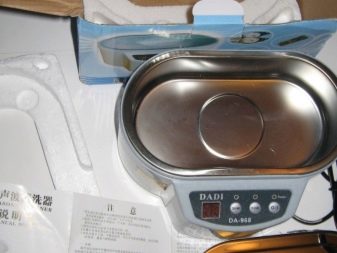
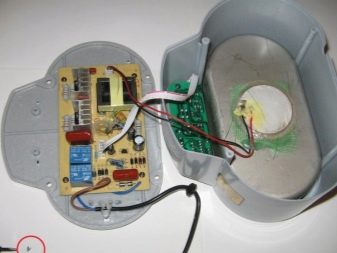
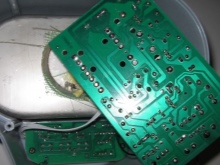
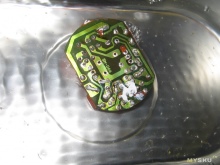
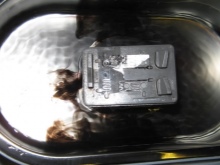
Nozzle cleaning
Car repair shops use an ultrasonic bath for various cleanings, helping to get in deep and speed up the repair process. For example, cleaning injectors is a fairly common operation. Such an option is not suitable for ceramic products.
Beforehand, it is necessary to disassemble the parts to take out the nozzles and check them on a test device, and then immerse them in a container of an ultrasonic bath filled with a special solution. At the end of the process, a second check is done.
The method is considered more effective than just washing, along with the wear of parts becomes more due to cavitation. Because of this and technical nuances, cleaning of injectors with ultrasound is used with high mileage and contamination.
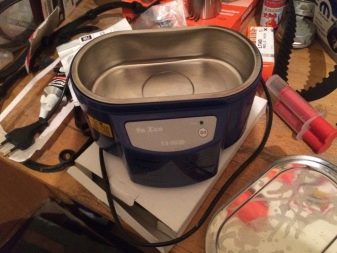
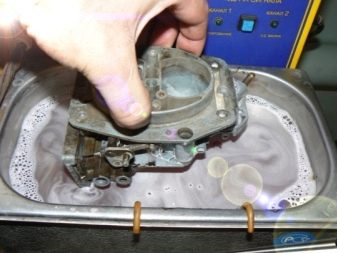
See the following video about cleaning injector nozzles with ultrasound.
Device
The construction of the ultrasonic bath comes down to three elements (except the tank):
- A generator that creates the ultrasonic vibrations;
- The transmitter, which transforms vibrations into mechanical vibration;
- The heating element (an additional part that improves efficiency) creates temperature conditions for a better process, can heat liquid media up to 70°.
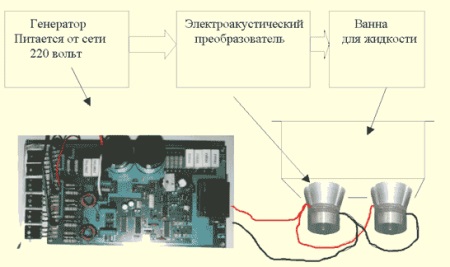
See the following video about how an ultrasonic bath purchased is arranged.
Types
Baths are in demand in many industries, the difference lies in the size of parts requiring cleaning, the frequency of use and the volume of work:
- Portable - neat devices with a capacity of up to 1 liter, used for private or commercial cleaning of small parts. Simplified models are characterized by an uncomplicated design, minimal number of functions. Semi-professional devices with additional options, electronic control, stainless steel tank of excellent quality are made for masters.
- Industrial ultrasonic baths differ in size: their working volume can be more than 10 liters, the minimum - from 4 liters. Almost all of them have a heating function, timers and additional cleaning options.
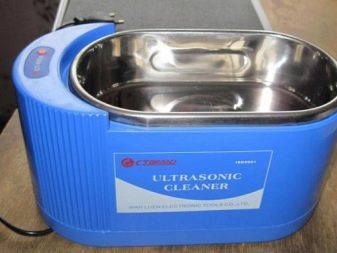
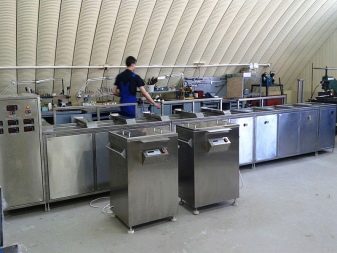
About ultrasound
Ultrasound is a physical term that describes the level of sound or noise, beyond human hearing, its range is defined as 16 kHz - 1000 kHz.
In the study of ultrasonic waves, it was found that they cause a kind of "boiling" of liquid substances, due to which the bubbles do not float, but explode, causing additional waves. Conventionally, this process is called "cavitation," which is the basis of the ultrasonic bath.
The size of the bubbles depends on the frequency of ultrasound: the higher the sound, the smaller the bubbles. Therefore, this method makes it possible to push out dirt and plaque from the surface of harder objects. Cavitation is inversely related to the height of the ultrasound: from small bubbles the pressure force of the resulting waves is less, so at a relatively low frequency cavitation is stronger. At the same time can remain "marks" on the surface, changing it at the level of the smallest particles. It turns out that the higher the frequency, the more minuscule the bubbles and the smaller their traces.

Features
Where jewelry precision and fine cleaning are required, ultrasonic baths are simply indispensable, they have a number of advantages over any other mechanical cleaning method:
- No need to be personally involved, once the item is loaded into the bath, all you have to do is turn on the machine;
- There is no direct skin contact with chemistry and no negative effects on health;
- The entire surface is cleaned - the smallest meshes, grooves, gaps where wipes, brushes, etc. cannot reach;
- Ultrasound leaves no marks, chips or other gross damage to the surface.
Ultrasound is able to clean sediment, paste residue, any corrosion, films, including protective films. Some stones and minerals are of organic or sedimentary origin, this makes them somewhat sensitive to this treatment. For this reason, you should pay attention to corals, pearls, opals, malachite, emeralds, turquoise, tanzanite, lapis, and exclude them from the list of works: after an ultrasonic bath, the "beauty" of the stone, its cut and polish is disturbed.
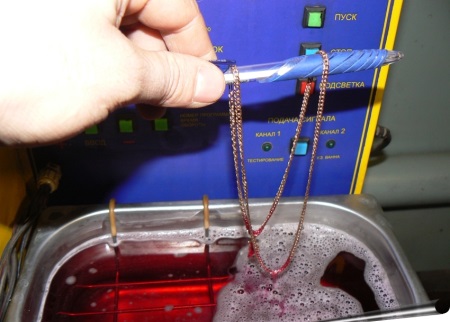
Additional functions
The use of accessories and special features simplifies and facilitates the work of the device, in some cases - increases efficiency.
The most common functions:
- Multimode. The simplest household ultrasonic baths work with 1-2 modes. Semi-professional ones allow you to set up to 5 modes. The variety is related to the nature of work and purpose of cleaning.
- Timer measures the operating time and automatically turns off the device, is provided on almost all models, except for the simplest and budget home versions.
- Heating has almost all models, it increases efficiency and speeds up the process. Heating of the liquid is carried out to a maximum of 70 ° C, it is even more than the necessary values. The optimal heating temperature is 50 °-60 ° C.
- Protection - will turn off the device without liquid and save it from overheating.
- Antistatic - the property is useful in the repair of cellular and office equipment, it is also achieved by using specific cleaners.
- Electronic control panels, light indicators. Of course, these are add-ons that increase the price of an ultrasonic bath, but it is difficult to do without them.
- Accessories help make the job simple and easy. These are nets and baskets for placing and washing parts, they will protect the steel vessel from contact with objects, damage and scratches. This will fundamentally extend the life of the appliance. The accessories can also include transparent lids. This is very convenient, especially when cleaning several small items at the same time.
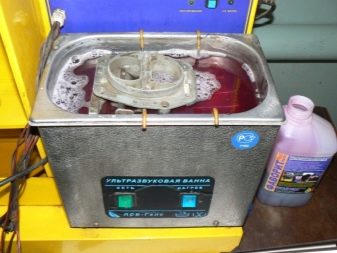
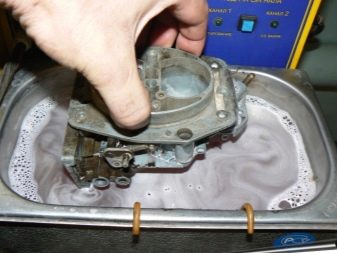
How to clean coins in an ultrasonic bath, see the following video.
Selection Tips
Select a ultrasonic bath - a step of importance and responsibility, which depends entirely on the purpose of cleaning, the scope of application. It is with a glance at them choose the operating parameters:
- The volume of the ultrasonic bath is related to the size and number of parts, objects that you will clean. It is forbidden to put these objects on the surface of the bath (there is a possibility of resonance and subsequent breakage of the device), so it is better to buy a basket in the kit, so that at least 3 cm remains to the bottom.
- Wave frequency is a concept from applied physics. Depending on the nature of cleaning and the sensitivity of the material select the operating frequency or choose an ultrasonic bath with a tuned range.
20-50 kHz - relatively coarse cleaning, used for industrial objects and parts, in the automotive industry. A frequency of 20 kHz can destroy cellular structures, but 35-40 kHz is the working range for household cleaning of resistant surfaces.
50-100 kHz - Intensive and softer cleaning, used in medicine and jewelry making. Suitable for partial sterilization.
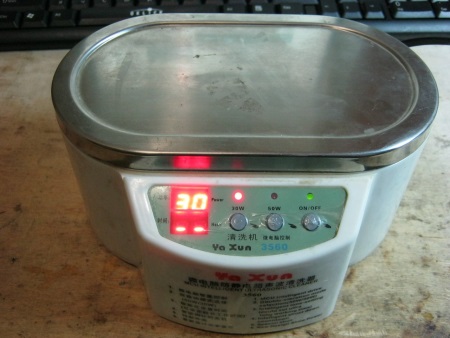
How to make your own hands?
Creative and capable technicians can create the "ultrasonic dream bath" themselves. For this you will need a little experience in electromechanics, wit and a few simple devices: a resistant strong deep bowl of stainless steel, a bath made of dielectric (e.g. porcelain or glass), smaller than the size of the bowl. A magnetic coil, a flat radio magnet, a non-conductive rod, a pulse transducer, and a pump will come in handy.
Transformer will act as a generator, vessels form the working volume of the bath, and the emitter is made from the remaining parts: it is necessary to rewind the wire from the bobbin on the prepared stick-dielectric, on the ferrite tail a magnet is put through.
Having made the transmitter blank, connect the bowls, leaving the porcelain inside the metal. It is necessary to make a hole at the bottom for contact with the emitter, and in the ceramic utensil two opposing "passages" for the liquid. If a pump is connected to them, the process of fluid renewal can be automated. Here the emitter is located at the bottom, there can be several of them, it is also possible to place them on the sides of the bathtub. After connecting the transmitter and generator, you need to fill the containers with the liquid-cleaner and only then plug in the network. The transmitter should be strong and compensate for possible power surges. For this purpose, a device for sensitive equipment used in TV studios and computer repair is suitable.
You can see how to use the ultrasonic bath to clean objects in the following video.
Operation and care
When working with the ultrasonic bath you need to remember:
- The operation of the device can only take place in the presence of liquid. Running an empty bath will cause a breakdown. For the same reason, you need to keep track of the liquid level. But leaving the device running or connected to the network is not allowed: in addition to the power surge there is a danger in the form of evaporation of the liquid. To extend the service life, connect the ultrasonic bath directly for cleaning manipulations.
- If disinfectant liquids are used in the bath, the heating function must be switched off. Many of these contain chlorine compounds that are dangerous to inhale and safe in liquid form.
- Since reagent liquids are used in the ultrasonic bath, rinsing is required after cleaning. It can be carried out in a container of the device, in a separate tank (dish or sink) with purified or running water, a special composition. Purified refers to water treated from chemicals and active ions or distilled water.
In the following video you can see how to care for your ultrasonic bathtub.
What fluids to use?
Liquids supplement the action of the ultrasound, and therefore are divided by application:
- Alcohol-based liquids (Vega, Lira, Zestron-FA) are suitable for workshops, cleaning boards and wafers.
- Universal and profile cleaners differ in their composition (alkaline, aqueous) and have surfactants in their composition. For example, "Cleanser of metals OM/UZ" is suitable for machine shops, the Cleanser TM Fly №2 - for jewelry salons, and the Cleanser TM-RemSkal 30 Spets for silverware is used by specialists, and home use is also possible; the water-based Cleaner TM-RemRad is for the repair of office equipment
- Shampoo-concentrates are gentle to surfaces, removes static electricity. Creolan is used for cleaning and disinfecting in dentistry, medicine, optics and jewelry. Economik is a universal product.
It has different concentrations and is packaged in 0.15 to 5 liters.
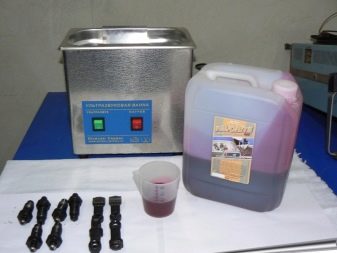
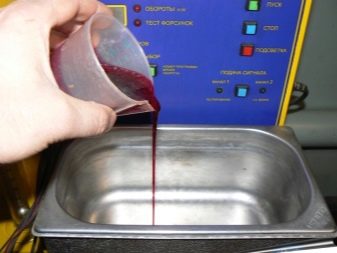
Tips
For commerce (cosmetology, dentistry, repair and jewelry shops), an ultrasonic bath is essential. Carefully read the instructions of the device and auxiliary liquids. Working concentration, odor and effect on materials are important. In addition, different liquids may have different duration of exposure, so the stages of the cleaning process sometimes have to select their own.
The cleaning procedure is not a substitute for complete sterilization, but a stage of treatment, so you can not ignore the recommendations of SanPiNa.
The ultrasonic bathtub is a successful example of taming scientific advances for household needs, but like any electrical appliance requires attention and care. That is the secret of successful use.




